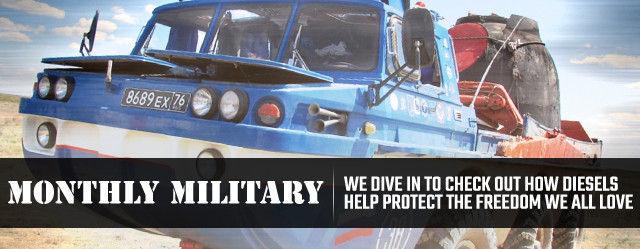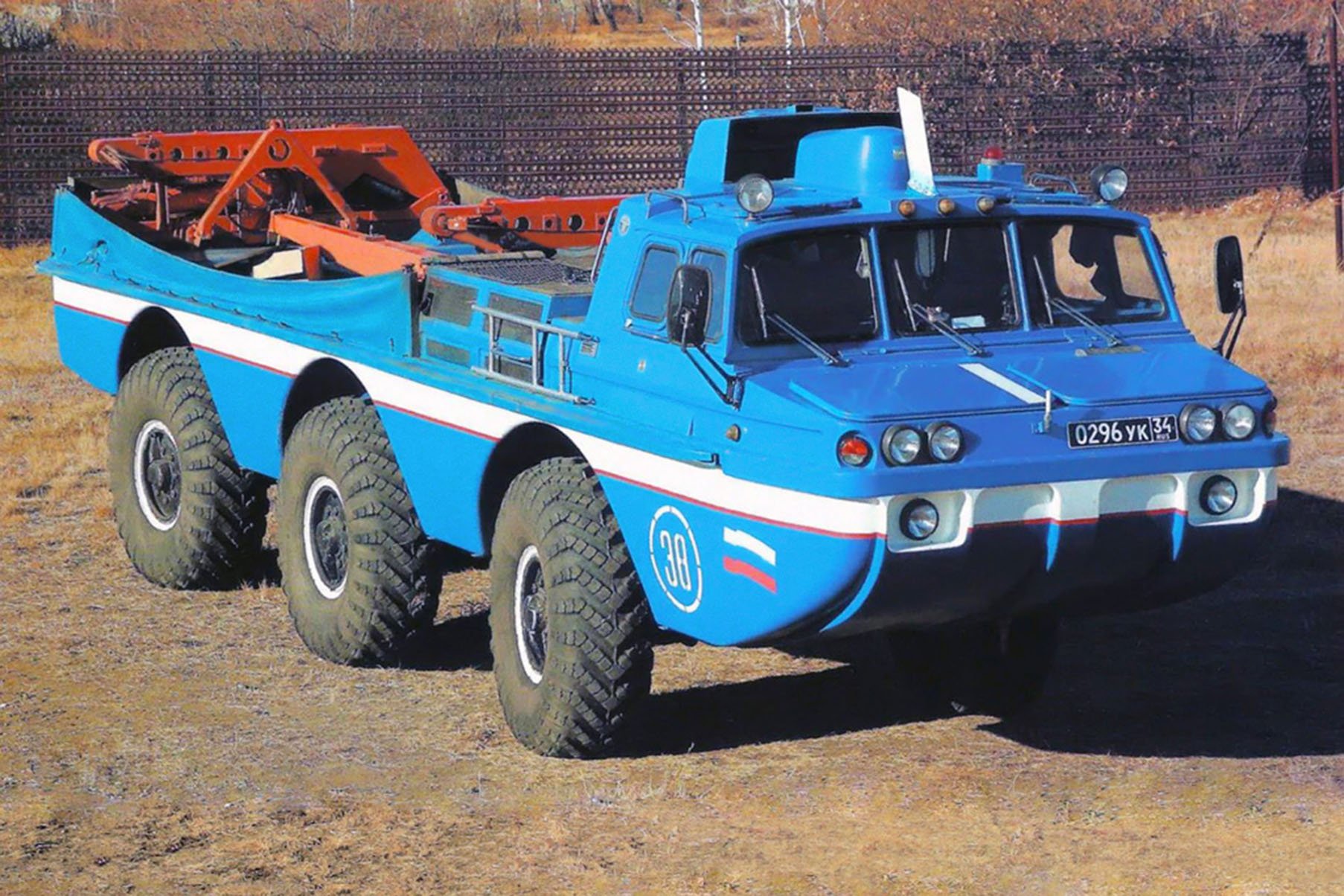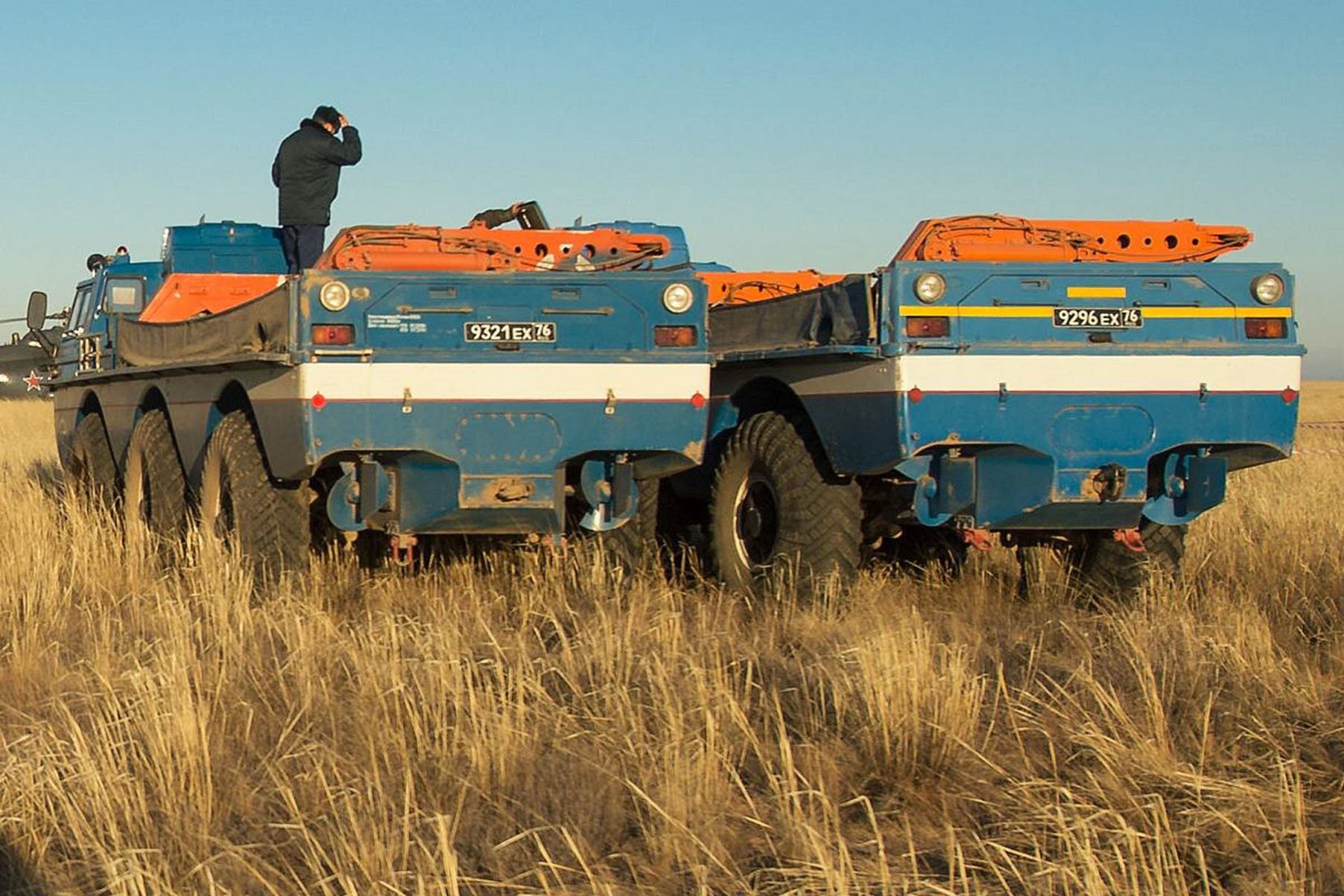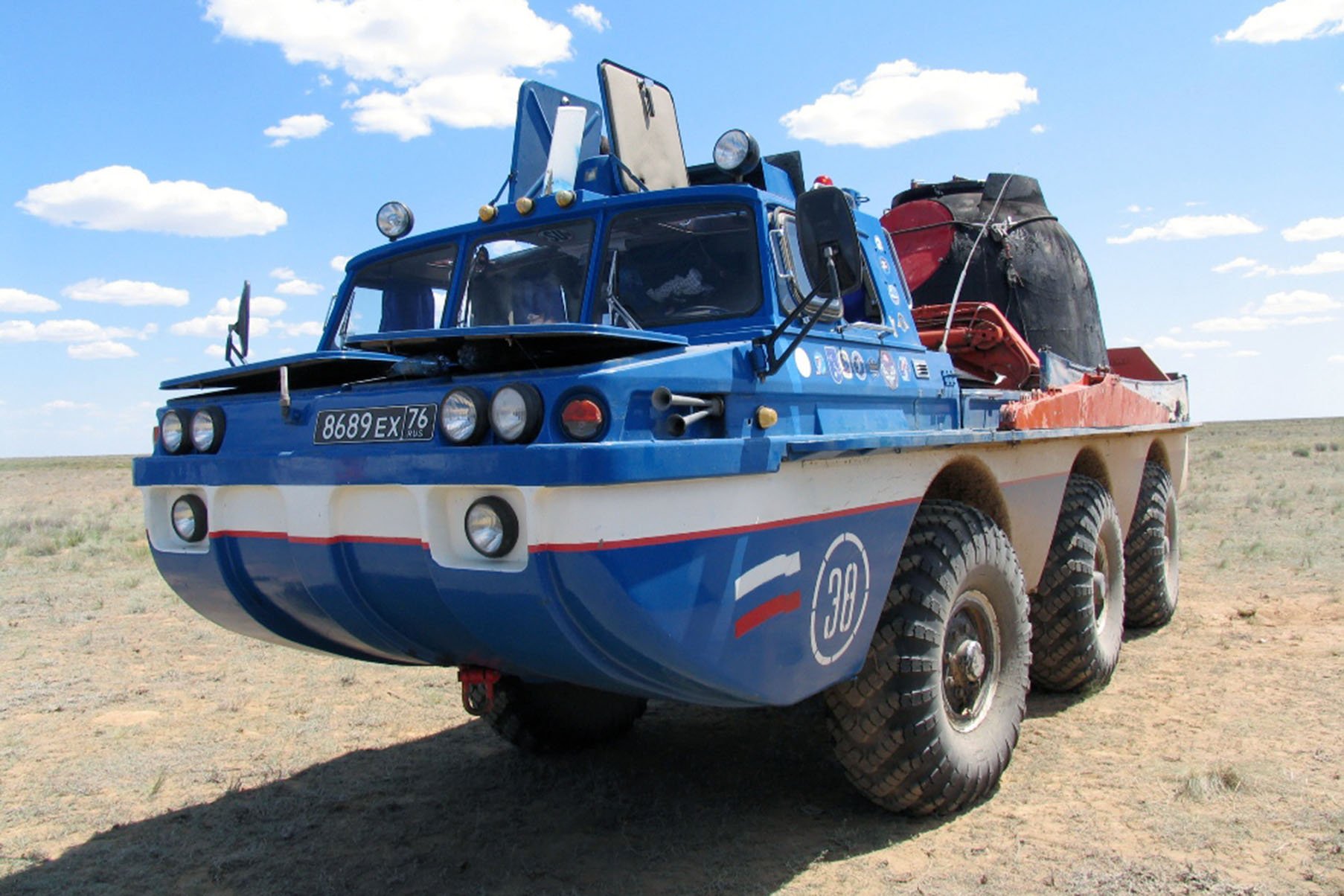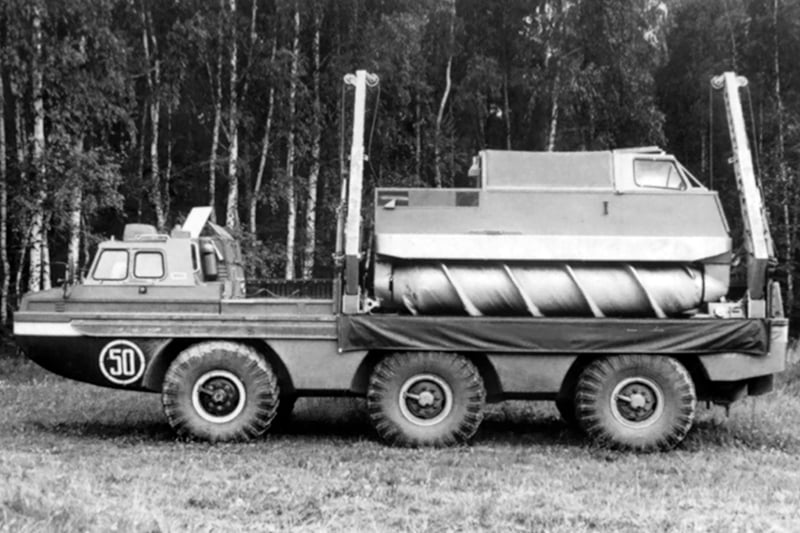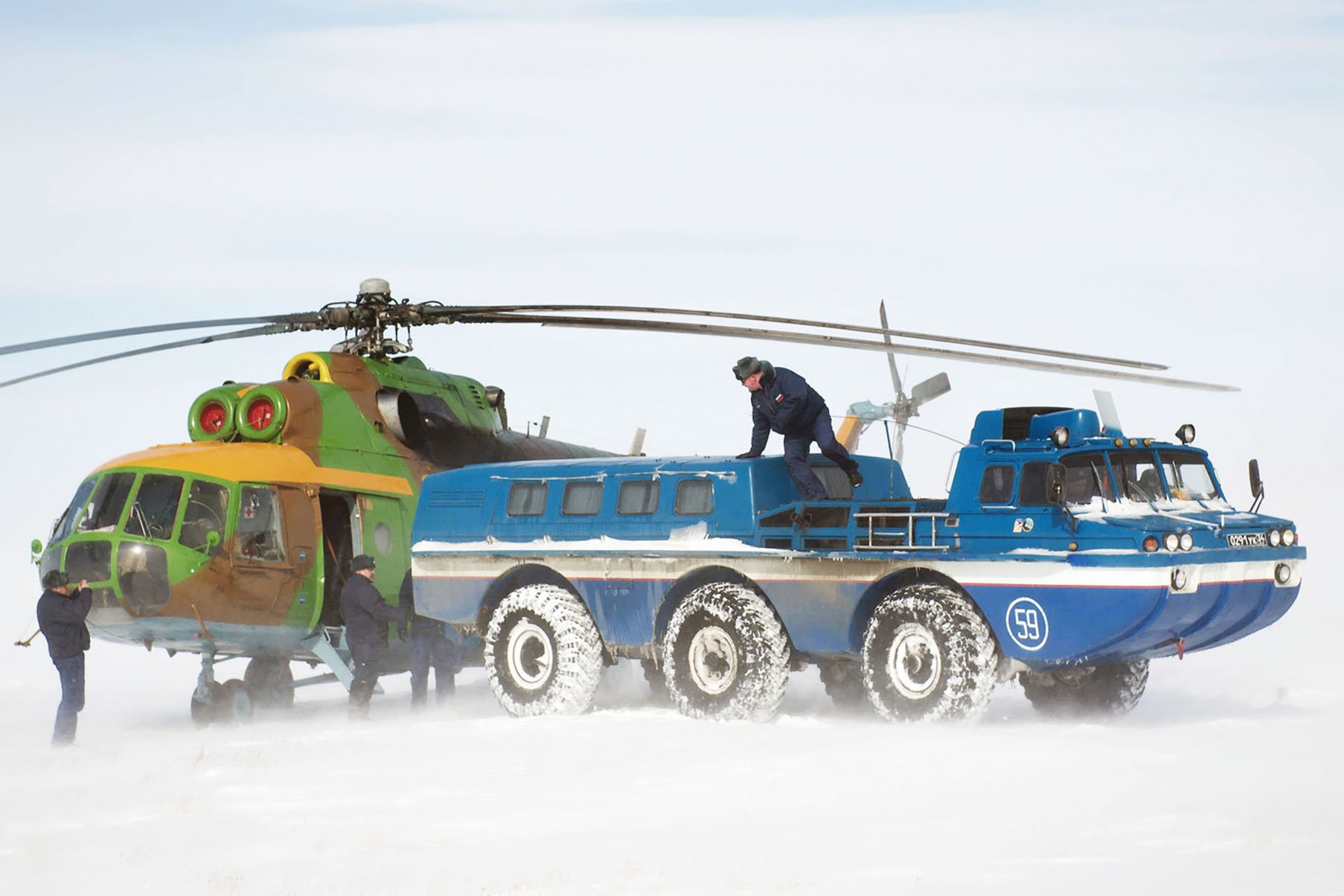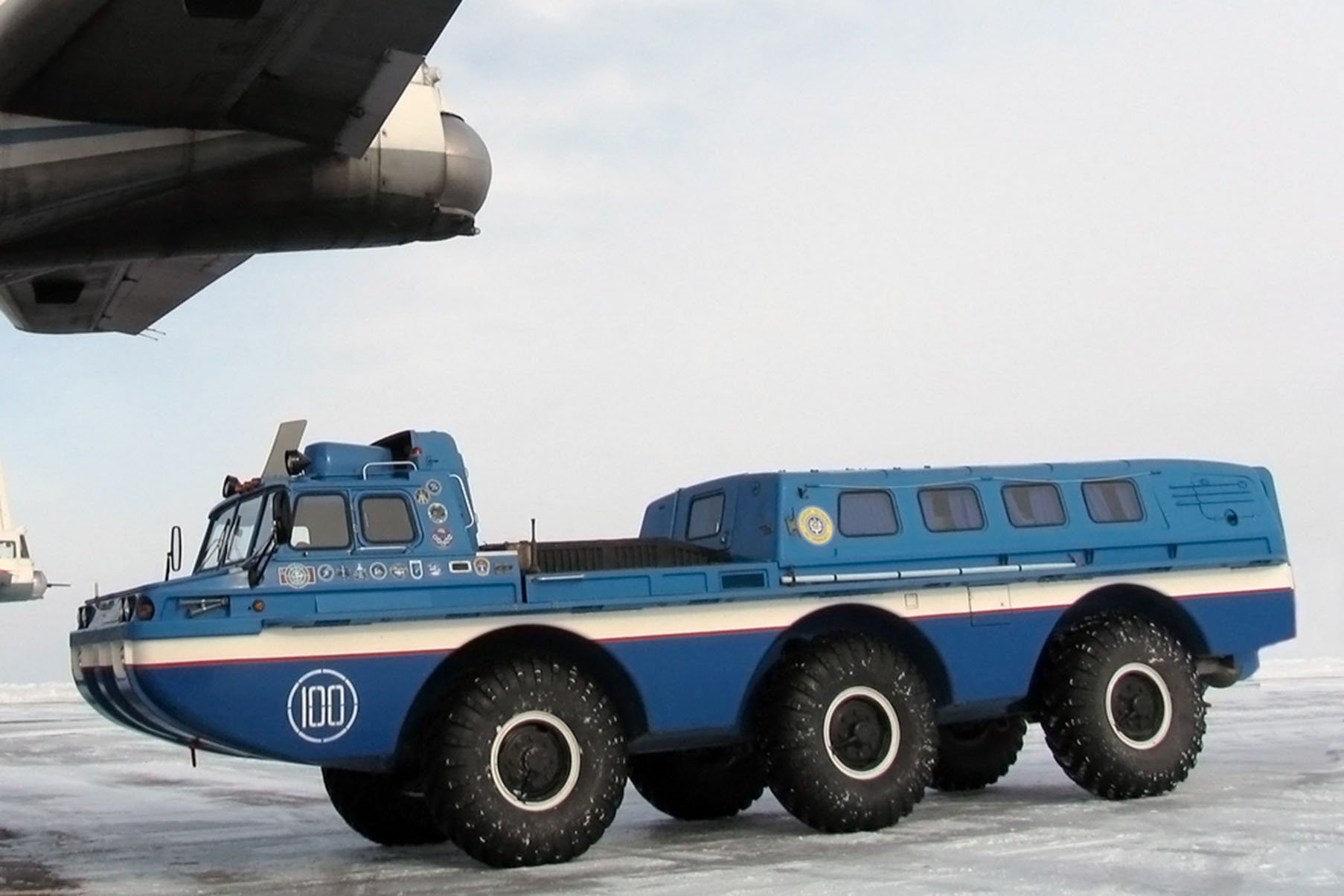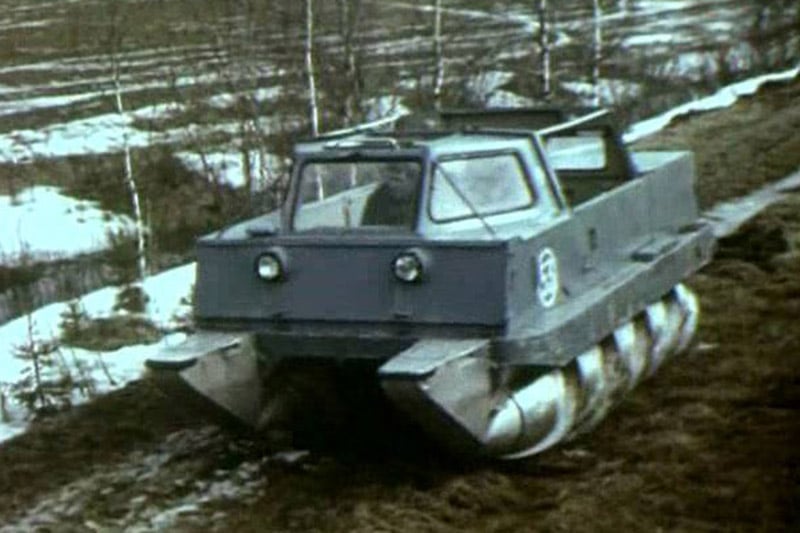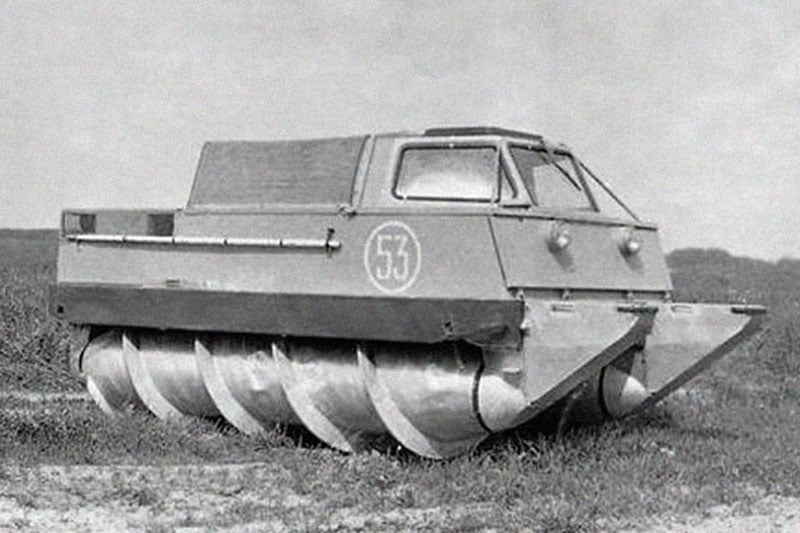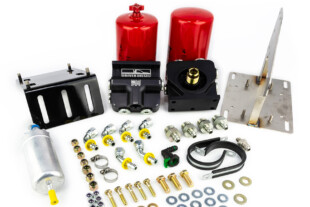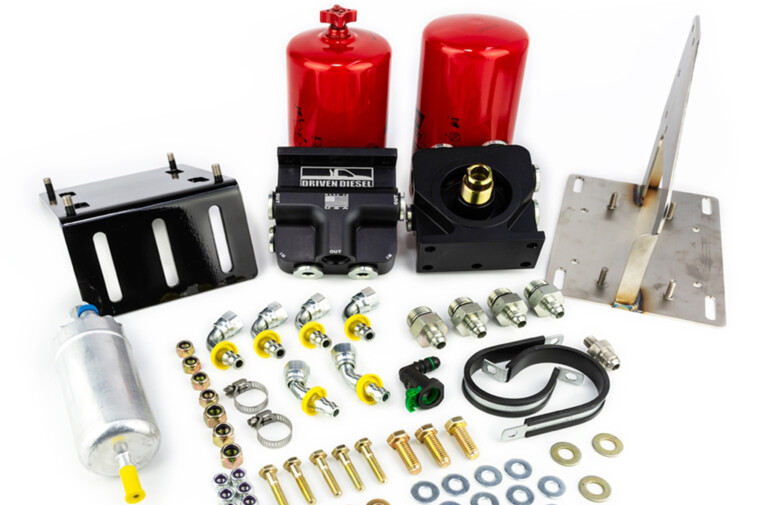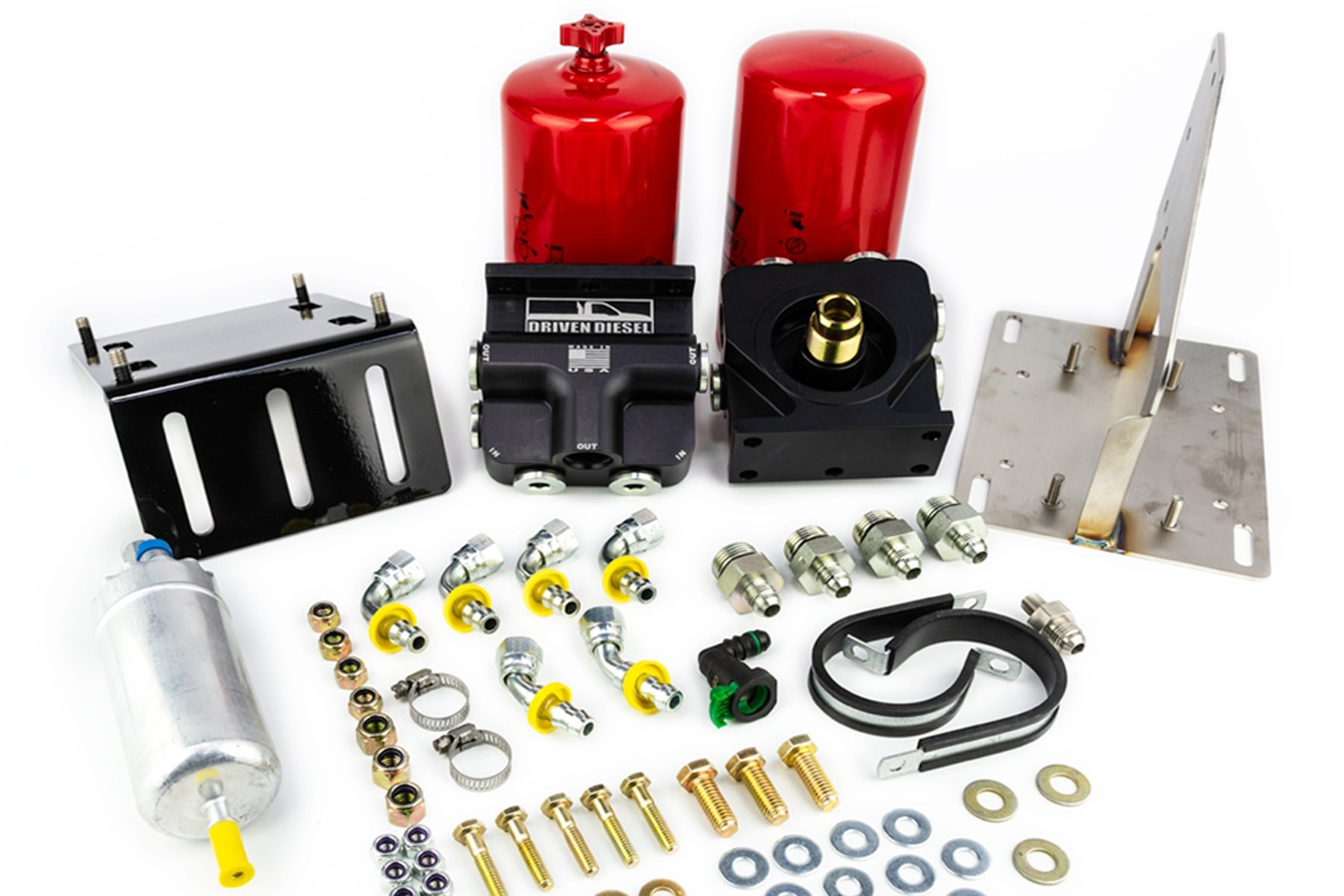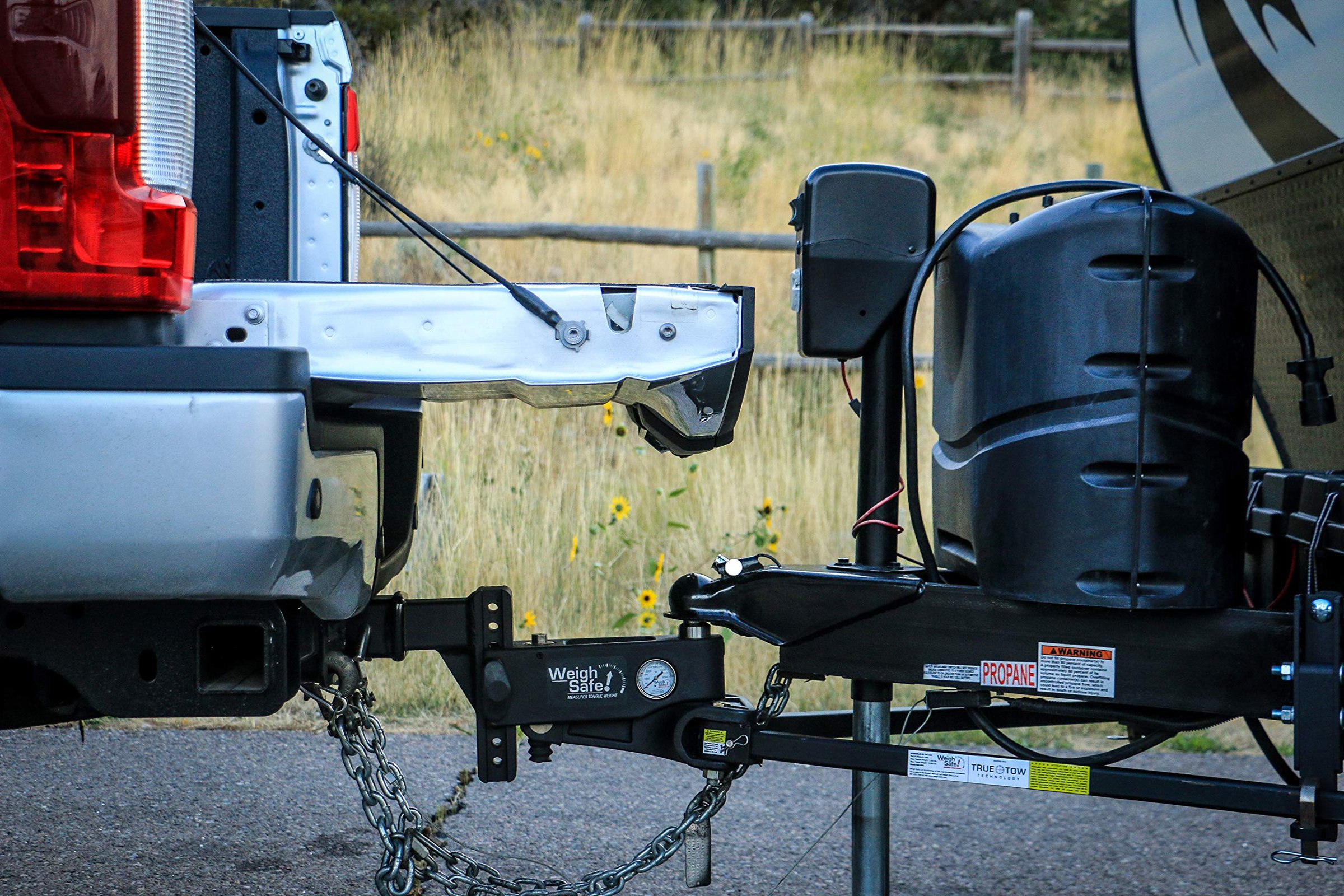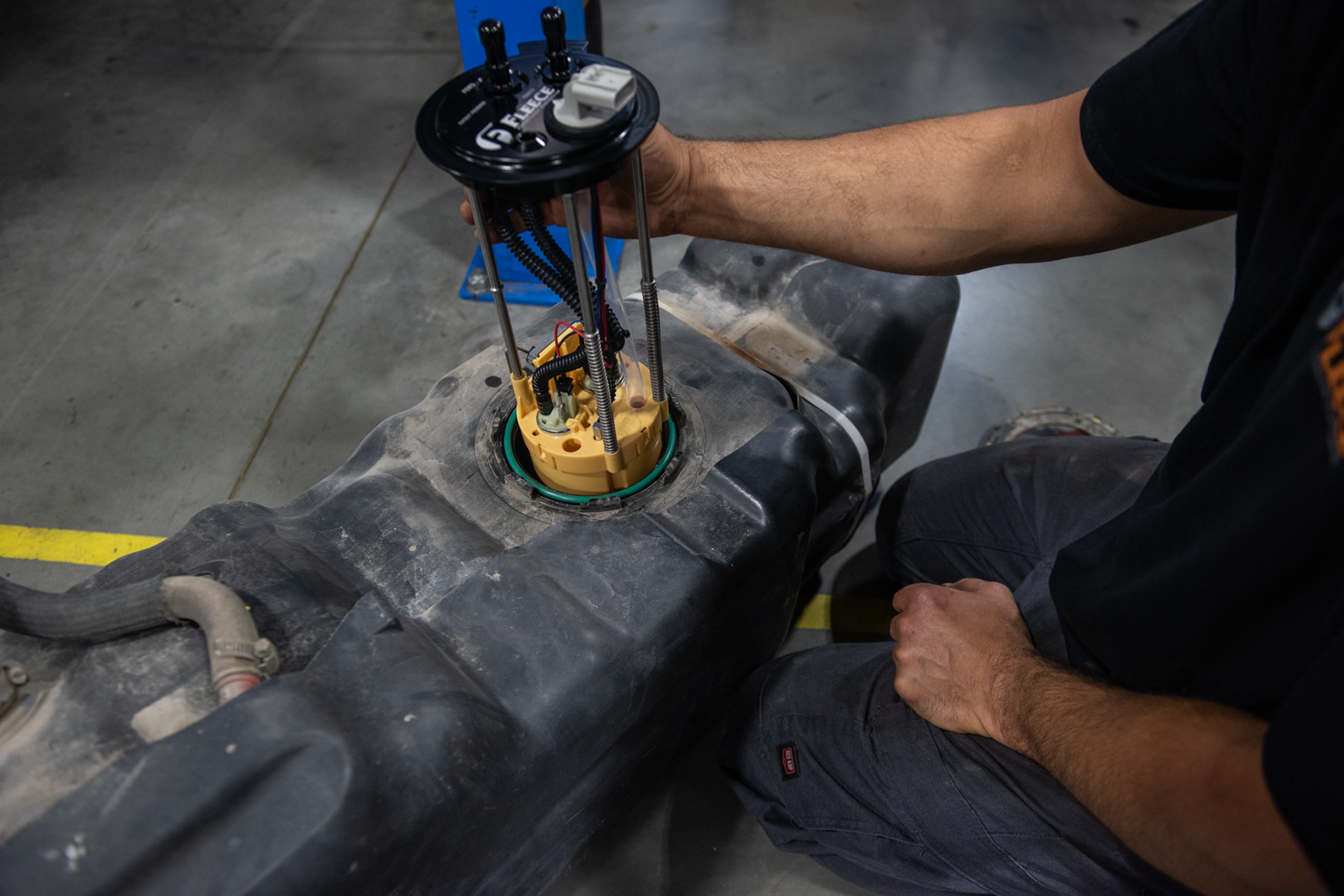During the height of the Cold War between Russia and the United States, the Space Race between these two governments was nearly as heated as the arms race. The two were intrinsically tied together in many ways. For its part, the military sponsored Space Race got underway in earnest when the Russians successfully launched the first satellite into orbit, Sputnik 1, on October 4th, 1957. A few years later, the Russians would again beat the Americans to the punch with the first manned space mission on April 12, 1961, but the U.S. countered in style when they successfully put the first man on the Moon on July 20th, 1969.
For decades the two countries’ space programs ran something of a proxy war for their governments and militaries. As such, the use of military-grade hardware became a more and more common occurrence in these endeavors, as evidenced by this, the ZIL 4906, nicknamed “Bluebird.”
Believe it or not, this 30-foot-long, 8-foot-wide behemoth was actually a reduced-size replacement for the ZIL PEU-1, which was so large and heavy that transporting it by airplane wasn't feasible. This presented a problem for astronaut search and rescue missions, as the vehicles would need to be deployed to the required regions as quickly as possible. As a result, ZIL began developing the 4906 in the early 1970s as a replacement for that specific purpose.
In contrast to most of the continental United States, vast expanses of Russian land consisted of some of the most desolate, inhospitable territory in the world. Temperatures in Siberia have been recorded as low as −89.9 degrees Fahrenheit in an area that comprises roughly 5,100,000 square miles. This posed something of an issue for manned Russian space missions, as astronauts returning to Earth could find themselves in some of the worst conditions anywhere on the planet upon touching down. Getting to them through enormous stretches of uninhabited tundra required serious off-road hardware, and that’s where the military ZIL 4906 and its screw-drive propelled supplemental vehicle, the ZIL 2906, came into play.
Specialized Equipment For A Specialized Task
In the 1960s, the Soviet space program developed the Soyuz series of spacecraft, and in turn, its re-entry capsule for astronauts returning from space missions. Part of the capsule’s design mandated it have the highest possible volumetric efficiency for occupants and cargo, which resulted in a spherical design. While this met the internal volume requirements that the Soviets wanted, the drawback was that the capsule’s shape offered virtually no control over trajectory once re-entry into the Earth’s atmosphere had begun. That meant that where the capsule would ultimately land was really anyone’s guess.
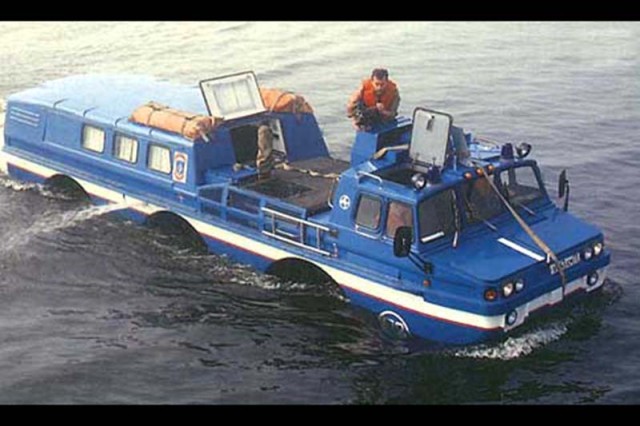
The ZIL 4906 and the 49061 variant (pictured here) featured a sealed fiberglass hull that helped to provide its amphibious capability. Two propellers installed at the rear of the vehicle offered propulsion in water with a maximum speed of about nine miles per hour.
This meant that the Soviets needed a retrieval vehicle capable of traversing harsh terrain over long distances in order to ensure they could get to the returning astronauts. In the early 1970s, the military began development of a search and rescue vehicle that could handle extreme climates, wade through the numerous bodies of water in Soviet territory, and collect both cargo and personnel. It would replace the ZIL PEU-1, which had proven to be too large and heavy to be transported by aircraft to the remote locations where the vehicle would be needed, making it unsuited to the job.
While the ZIL 4906 offered serious off-road and cargo hauling capability, it also came with one awesome party piece - the ZIL 2906. Deployed from a crane installed on the bed of the 4906, the 2906's screw-drive propulsion system allowed the vehicle to go places that even the 4906 could not, in essence providing the "last mile" capability that might be required to reach the astronauts in particularly harsh terrain. Getting the 2906 off the bed of the Bluebird was a bit of process though, and reportedly could take up to half an hour from start to finish.
The result was the ZIL 4906. Nicknamed the Bluebird, the new vehicle was developed in two different iterations – the 4906, designed for cargo transport, and the 49061, which was configured for maximum military personnel capacity. Sporting a sealed fiberglass hull, the 3.5-ton 6×6 boasted amphibious capability and could reach a top speed of 50 mph on land. Two different powerplants could be found in the roughly two dozen examples built during its production run – either a ZIL-645 diesel V8, good for about 185 hp, or a ZIL-130 gasoline V8 which made 150 horsepower.
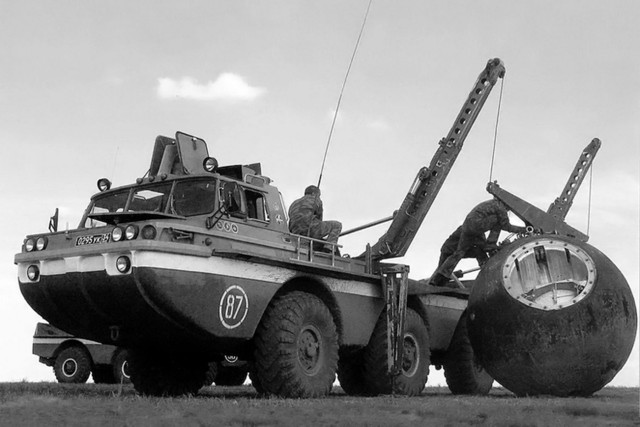
Soviet personnel are seen here retrieving a Soyuz re-entry capsule. While the capsule’s spherical shape maximized internal volume for passengers and cargo, it provided no ability to actually steer as the capsule rapidly descended back to Earth. As a result, the location of the capsule’s landing site was more or less arbitrary once re-entry into the atmosphere had begun. That design limitation is part of the reason that the 4906 and 2906 recovery vehicles were required, as that unguided re-entry often put the astronauts in a remote part of Siberia, where some of the coldest temperatures on Earth have been recorded. Accordingly, time was of the essence when it came to retrieving the astronauts after they landed.
Regardless of which engine motivated the ZIL 4906 in question, the power was routed through a 10-speed manual transmission (or more accurately, two five-speed gearboxes), and two propellers installed on either side of the rear of the vehicle provided propulsion through water at a reported top speed of about nine miles per hour. Both the front and rear wheels provided steering to improve the big machine’s maneuverability, while a central tire inflation system equipped to the vehicles allowed pressures to be adjusted for the varied terrain the 4906 might encounter.
Measuring more than 30 feet in length, eight feet in width, and over nine and half feet in height, the ZIL 4906 rode on an independent lever-torsion bar suspension, and its curb weight ranged from approximately 18,000 to 19,000 pounds depending on configuration.
The ZIL 49061 differed from the 4906 in that it ditched the cargo bed in favor of a closed passenger compartment. This provided seating for ten occupants (or bedding for six) and was equipped with heating and air conditioning systems, along with specialized equipment for communications, navigation, and medical purposes.
Yet despite the impressive capability offered by the ZIL 4906, the Soviets knew there would be environments that even the 6×6 couldn’t handle. In those instances, the wild-looking ZIL 2906 could be deployed from the bed of the ZIL 4906 itself.
Military ZIL Screw Drive
When the terrain got too extreme for the ZIL 4906, ZIL’s nightmare-inducing 2906 “Screw Drive” vehicle was on hand to take it from there. Given the extremes of Siberia, it’s fairly likely that most Russian astronauts were first greeted upon their return to Earth by one of these.
Using a concept similar to a propeller, the 2906 featured a pair of cylindrical “screws” installed underneath the vehicle, and the twisting motion of the threads on the screws would push the 2906 through, well, almost anything.
Each screw could be controlled independently of each other – turning the screws in opposite directions of one another counteracted their lateral forces to provide forward motion, while individual adjustment of each screw’s operation gave the operator steering capability. Unsurprisingly, the drivetrain required to make the 2906’s design work was a fairly convoluted setup. It consisted of two 77-horsepower VAZ engines that were hooked to two four-speed gearboxes, each of which controlled one of the screws.
As capable as the ZIL 4906 was, its size and overall design could limit the places it could reach. If rescue teams encountered terrain that the 4906 couldn't power through during an operation, the ZIL 2906 would be deployed from the bed of the 4906 via a built-in crane. Using two cylindrical threaded "screws" that could be controlled independently, the 2906 could make short work of nearly any obstacle one might encounter in the Russian tundra. The rear of the 2906 had space allotted for two stretchers as well as additional seating.
Despite its incredible capability through swamps, snow, and water, the 2906 was far from without flaw. The screw design meant that large rocks were a problem for the machine, and even under ideal circumstances, it couldn’t go much faster than 25 mph. Additionally, deploying the 2906 from the Bluebird was a half-hour process, and if the temperature was below -40 degrees Celsius (it is Siberia, after all) it took another half hour to get its engines up to operating temperature before it could be driven.
Both the military 4906 Bluebird and 2906 Screw Drive remained in production from 1980 until 1991. As part of a closely-guarded Soviet space program, limited documentation about these two vehicles exists today, and with the collapse of the Soviet Union in late 1991, most of the examples built have either been dismantled or have fallen into disrepair in the years since.



